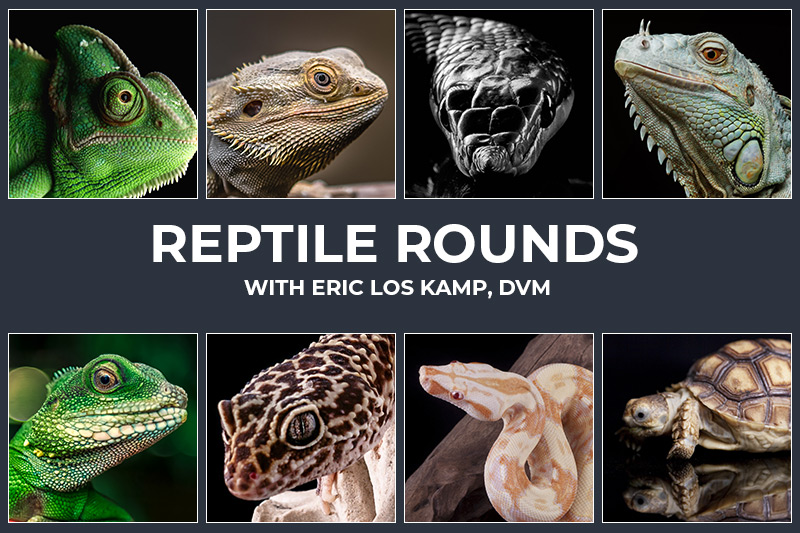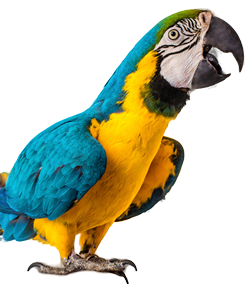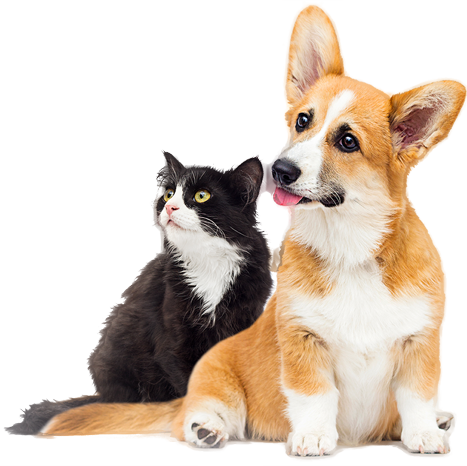Quality of Life for Reptiles
I recently had to put down my Ackie Monitor, Tyranitar. Even though I do not regret this- as he had neurologic issues impeding his ability to defecate and was septic- it was hard to say goodbye. I made this decision by assessing Tyranitar’s quality of life. For critically ill reptiles, having objective measures of quality of life can help minimize suffering and tell us when a stopping point is being reached. This article intends to go over how to assess your reptile’s quality of life. This is imperative because reptiles are incredibly stoic animals. They can tolerate extreme levels of disease and sometimes they can pass away without too many outward signs.

Objective measures of quality of life are based on behavioral, biological, and physiological components. Behaviorally, it’s important to know whether your reptile is acting appropriately. This will vary based on the species and the age. Is your animal basking for the appropriate amount of time? Is it a species/individual that is usually pretty bold that is now hiding more? Is your reptile becoming more irritable or more/less handleable? Essentially, is your reptile acting like itself? As the owner, you are the expert in what is normal/abnormal for your reptile, and this can guide you into how it is doing overall. For me, I was able to see Tyranitar become more lethargic. While he was always more cautious than typical Ackie Monitors, he was overtly sleeping and not moving for full days on end.
Biologically, is your animal eating, drinking, and defecating appropriately? Is your reptile losing, maintaining, or gaining weight? With both of my Ackies- Charizard and Tyranitar- the lack of defecation was a major calling card for me that something was wrong. Physiologically, how is the disease/primary issue? Is the disease progressing, maintaining, or improving? Is the current treatment plan helping the primary issue? How is the animal doing overall? I recently had a Bearded Dragon that had exopthalamus (protrusion of the eyes) bilaterally due to organ failure, and while the exopthalamus was going down, the lizard was not eating nor moving around.
Another aspect of quality of life also pertains to the prognosis and you the owner. While a grave prognosis and a fair prognosis both carry risks if treatment is pursued, the grave prognosis has substantially more complications. Some owners are willing to go to the end of the line with this, others do not want to put their animal through anything too strenuous. I’ve been on both sides of this coin. With Charizard, I pursued an exploratory surgery and a potential nephrectomy (removal of a kidney) and he passed on the table. With Tyranitar, I wanted to know what was going on to make the most educated decision to limit his suffering. Additionally, you as the owner need to consider your emotional and financial capacity to see treatment through to completion.
I have clients take these measurements and track them over a long period of time, and then classify days as “Good” or “Bad” days. “Good” days often mean the animal is behaving normally, eating/drinking/defecating, maintaining/gaining weight, and the disease process is being successfully managed. “Bad” days means the animal is behaviorally inappropriate, not eating/drinking/defecating, losing weight, and the disease process is progressing. When the “Bad” days outnumber the “Good” days, then you have a way to see whether your pet is not doing well and another discussion with your vet is required.
I am a recently graduated exotic animal veterinarian working in Central Florida. While I see many different species- including reptiles, amphibians, birds, rabbits, rodents, ferrets, and Florida wildlife- I am also actively pursuing a board certification in reptile/amphibian medicine through the American Board of Veterinary Practitioners (ABVP). To qualify, I need to see a suitable amount of cases of reptiles and amphibians, which is typically around ten cases per week. Additionally, I need to read various scientific journals and textbooks related to reptile/amphibian medicine. I also need to contribute to the scientific literature by publishing case reports and research papers. The certification process culminates in a two day boards examination. One such research paper I am currently working on looks into the predisposing factors of gout in Australian dwarf monitor lizards in the subgenera of Odatria.
Gout is a fairly common disease in captive reptiles. It is the accumulation of excess uric acid crystals in the body. This can occur in two major forms- 1) visceral gout, where the uric acid crystals deposit into organs such as the liver, and 2) articular gout, where the uric acid crystals deposit into the joints. These forms are not exclusive, and both visceral and articular gout can occur in the same animal. This accumulation of excess uric acid crystals has multiple causes. It can be caused by chronic dehydration, diets too high in protein, or other conditions affecting the function of the kidneys such as infections, neoplasia, and congenital defects. Monitor lizards seem to be particularly susceptible to this disease, especially the small Australian dwarf monitors.
In my time in the Ackie Monitor community, which spans three years, I’ve seen an increasing number be diagnosed and dying of gout, among them my own pet Charizard. With his passing, I started looking into the disease process of gout and how it forms. Surprisingly, despite being such a prevalent disease in varanids, there are little formal studies describing gout in these dwarf monitor lizard species. Currently, I am conducting a retrospective study to encompass all Australian Odatria that have a)died from and been diagnosed with gout, b) had necropsies performed.
For animals that qualify, I am interested in looking at the age, sex, lineage, body condition, reproductive activity, enclosure type/size, substrate type/depth, temperatures, humidity ranges, hydration status, diet and supplementation, age of onset of gout, clinical signs, type of treatment if pursued, form(s) of gout present, gross necropsy results, and histopathology results. With this information, I hope to find commonalities between the individuals, whether that be animals of the same lineage, similar diets, similar environmental conditions, or other factors that may predispose these animals to gout. I hope this paper can not only provide crucial information to either avoid certain bloodlines or provide new husbandry standards for these species but also serve as a starting point for future research to be performed in other monitor lizards and reptile groups to advance the understanding we have for reptiles as a whole and their diseases.
I currently have approximately eleven individuals enrolled in this study ranging from three species- the Spiny Tailed Monitor or Ackie Monitor (Varanus acanthurus), Kimberley Rock Monitor (Varanus glauerti), and the Pilbara Rock Monitor (Varanus pilbarensis). In addition to these species, I am interested in qualifying individuals of the following species: the Black Headed Monitor (Varanus tristis), the Ridge Tailed Monitor (Varanus storri), Pygmy Mugula Monitor (Varanus gilleni), King’s Monitor (Varanus kingorum), Northern Blunt Spined Monitor (Varanus primordius), Stripe Tailed Monitor (Varanus caudolineatus), Short Tailed Pygmy Monitor (Varanus brevicauda), Rusty Desert Monitor (Varanus eremius), Banded Tree Montior (Varanus scalaris), and any other closely related monitor lizards.
If you have animals or know people that have animals that would qualify for this study, please reach out to me at drloskamp@wpvet.net. You can also reach out to me on my lizard’s instagram page @exotics_with_lk.





